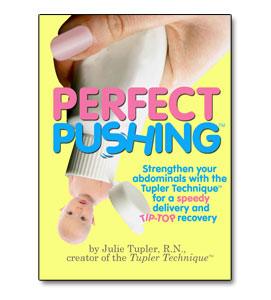Diastasis Rehab Video for Pregnancy
Diastasis Rehab Video for Pregnancy
Couldn't load pickup availability

- Product Description
Tupler Technique® Perfect Pushing® Video*
*BEFORE PURCHASING THE SERVICE TO STREAM (NOT DOWNLOAD) ONE OF OUR VIDEOS FOR ONE YEAR, PLEASE READ THESE TERMS UNDER VIDEO STREAMING CAREFULLY BECAUSE THEY DESCRIBE THE TERMS AND CONDITIONS THAT APPLY TO YOUR PURCHASE AND USE OF VIDEO CONTENT FROM TUPLER INC. IF YOU DO NOT AGREE WITH THESE TERMS PLEASE DO NOT PURCHASE THIS SERVICE. PLEASE NOTE, ONCE PURCHASED YOU CANNOT CANCEL YOUR ORDER AND THERE ARE NO REFUNDS.
Childbirth Education comes at the end of your pregnancy and only prepares your mind! You would not run in a race without training. Why would you go into labor without training for it? This program will prepare you for the marathon of labor! Pushing incorrectly can create a diastasis or make it worse. Pushing incorrectly can also weaken your pelvic floor causing problems such as prolapse and incontinence. You cannot learn how to push when you are in pain during labor. Pushing is a skill that needs to be learned and practiced during pregnancy. It requires strong abdominal muscles so you can push without the muscles getting tired. That is why you must strengthen your abdominal muscles with the Tupler Technique® exercises. These exercises are totally safe and will not hurt your baby. These exercises have been done for over 20 years with our pregnant clients. Pushing also requires an awareness of how to use your abdominal muscles separately from your pelvic floor muscles. A helpful pushing image is like you are squeezing toothpaste out of a tube! The goal being to push with your strengthened and splinted abdominal muscles while relaxing your pelvic floor muscles that have been strengthened during pregnancy. If you practice this skill during your pregnancy it will become second nature when you are in labor. During pregnancy it is important to keep the diastasis (separation of outermost abdominal muscles) as small as possible. When the abdominal muscles separate it weakens the support system for your back and the organs. So a diastasis during pregnancy will have two adverse side effects on you. No support for your back causing back problems and no support for the uterus. When the uterus is not supported, it will tilt forward. Your cervix will then be facing sideways instead of facing down and lined up with vaginal canal. A sideways facing cervix can put you at risk for a c-section.
This video is divided up into two sections. Section 1 is the 4- step Tupler Technique®. This part of the program is done for the first six weeks. During this time it is recommended not to do any other exercise routine or sporting activity. Just walking or a modified jog. During this time it is important to allow the connective tissue to heal as you strengthen your abdominal muscles and learn how to use them correctly during activities of daily living. In part 2 you are taught how to push in labor. You are also given some modifications for exercising during pregnancy. In week six you can do the workout in the Diastasis Rehab Lose Your Mummy Tummy® Video. There are just two modification to be aware of. Do not stay on your back for more than 3-5 minutes. If you feel lightheaded or dizzy in a back lying position roll to your side. Also, motionless standing while exercising is not a good idea. Most exercises can be done seated. The Tupler Technique® Guidebook is a summary of the program and shows you how to progress the exercises over 18 weeks on a week to week basis. It is not a substitute for the video. There is a lot of information on this video, so make sure you watch both parts several times. Because there is so much information on the video, it is recommended to watch it before having a personal training session with a Trained Professional, attending a seminar or workshop or doing the Eighteen Week Ongoing Online Support Program. Women can wear a splint during pregnancy. We recommend that you wear it the second trimester when you are feeling better. You will want to buy our extenders so the arms of the splint can accommodate your growing belly.




